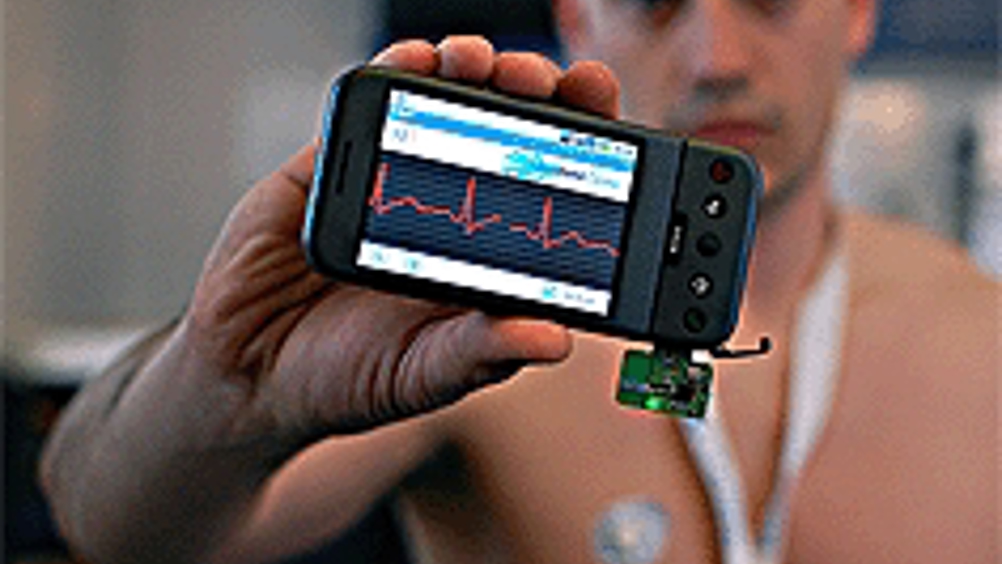Technology enables heart monitoring via mobile phone
A new mobile phone technology that monitors a user’s heart, beat by beat, could potentially allow doctors to keep an eye on patients with cardiac abnormalities remotely.

The heart monitoring system, developed by Belgian research institutions Imec and Holst Centre with TASS software professionals, was recently demonstrated for Android mobile phones at the Wireless Health Conference in San Diego, California, from 5-7 October.
While now in prototype form, the technology looks like a necklace of wires attached to a patch that would be worn on the user’s chest. The patch contains a sensor and two low-power microchips for amplifying the electrocardiogram signals from the user’s beating heart and filtering them. A microprocessor from Texas Instruments processes the data and a low-power radio wirelessly transmits the information to a user’s mobile phone. From there the data can be transferred anywhere, including a doctor’s office.
Julien Penders, programme manager of Body Area Network at Imec/Holst Centre, said that unlike current home health monitoring products that provide information on just the average heart rate, the Imec/Holst Centre device provides beat-to-beat analysis.
Another feature distinguishing it from other devices on the market, he added, is its lower power consumption providing seven days of constant use between charges.
Register now to continue reading
Thanks for visiting The Engineer. You’ve now reached your monthly limit of news stories. Register for free to unlock unlimited access to all of our news coverage, as well as premium content including opinion, in-depth features and special reports.
Benefits of registering
-
In-depth insights and coverage of key emerging trends
-
Unrestricted access to special reports throughout the year
-
Daily technology news delivered straight to your inbox










Fusion inches closer as ITER completes magnet system
I believe the purpose of ITER isn't to make usable power, it is a research project which will be used to design the first generation of actual...